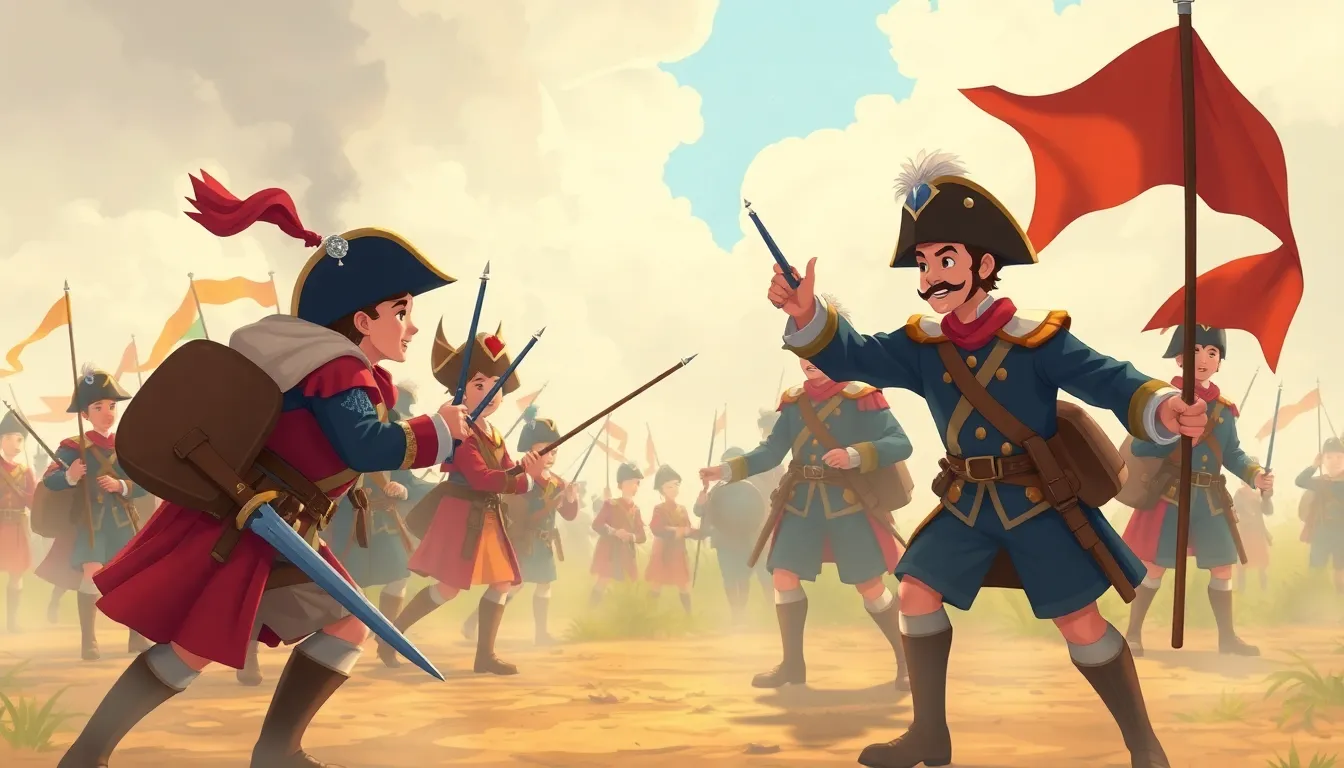
⚔️ the Napoleonic Wars: A Kid‑friendly Adventure in History
Introduction
Imagine a world where a tiny island in the Mediterranean becomes the center of a huge clash involving many countries. That’s what happened in the early 1800s during the Napoleonic Wars. In the next few pages you’ll meet the famous leader Napoleon, learn why the wars began, see how they changed everyday life, and even try a simple “battle‑map” experiment!
1. Who Was Napoleon?
- Napoleon Bonaparte was a French soldier who rose from a modest background to become Emperor (the ruler of an empire).
- He was known for his brilliant Strategy (a plan for winning battles) and his love of Uniforms (matching clothes worn by soldiers).
- At only 35 years old, Napoleon crowned himself emperor in 1804, and his name soon appeared on maps across Europe.
Word Box – Imperial: relating to an empire or its ruler.
2. Why Did the Wars Start?
A. the French Revolution’s After‑effects
The French Revolution (1789‑1799) overthrew the king and introduced ideas like Liberty (freedom) and Equality (being treated the same). Other nations feared these ideas might spread to their own lands.
B. the Rise of Coalitions
A Coalition (a group of countries that join forces) formed against France. The first coalition (1792‑1797) fought France, but Napoleon’s victories in Italy and Egypt made him a hero.
C. the Spark
In 1803, Britain declared war on France because of trade disputes and Napoleon’s expansion. This marked the beginning of a series of wars that lasted until 1815.
Did You Know? The British navy used a secret code called the cipher to send messages that the French couldn’t read!
3. Big Battles & Everyday Life
| Battle (Year) | Where? | Why it mattered |
|---|---|---|
| Austerlitz (1805) | Near the Czech Republic | Napoleon’s “masterstroke” (clever plan) gave him control over Central Europe. |
| Waterloo (1815) | Belgium | The final defeat that ended Napoleon’s rule. |
| Peninsular War (1808‑1814) | Spain & Portugal (the Peninsula is a land surrounded by water on three sides) | Showed how guerrilla fighters (small, local groups) can resist a big army. |
Life on the Home Front
- Conscription (mandatory military service) meant many boys as young as 12 helped as drummers or messengers.
- Families faced Blockades (when a navy stops trade) that made food scarce, leading to Rationing (limited portions).
- Yet, the wars also spread ideas about Nationalism (pride in one’s country), which later helped many nations become independent.
4. Mini Experiment: Build Your Own Battle Map
What You Need
- A sheet of plain paper (or a poster board)
- Colored pencils or markers
- Small stickers or cut‑out paper shapes for armies
Steps
- Draw a simple map of Europe showing France, Britain, Spain, and Russia.
- Mark where the three battles above happened with a star.
- Use one color for French troops and another for the opposing armies.
- Try moving the “troops” around to see how distance, rivers, and mountains could help or hinder an army.
**What you
What you’ll discover: moving armies shows why geography—like rivers and mountains—can help or stop an army.